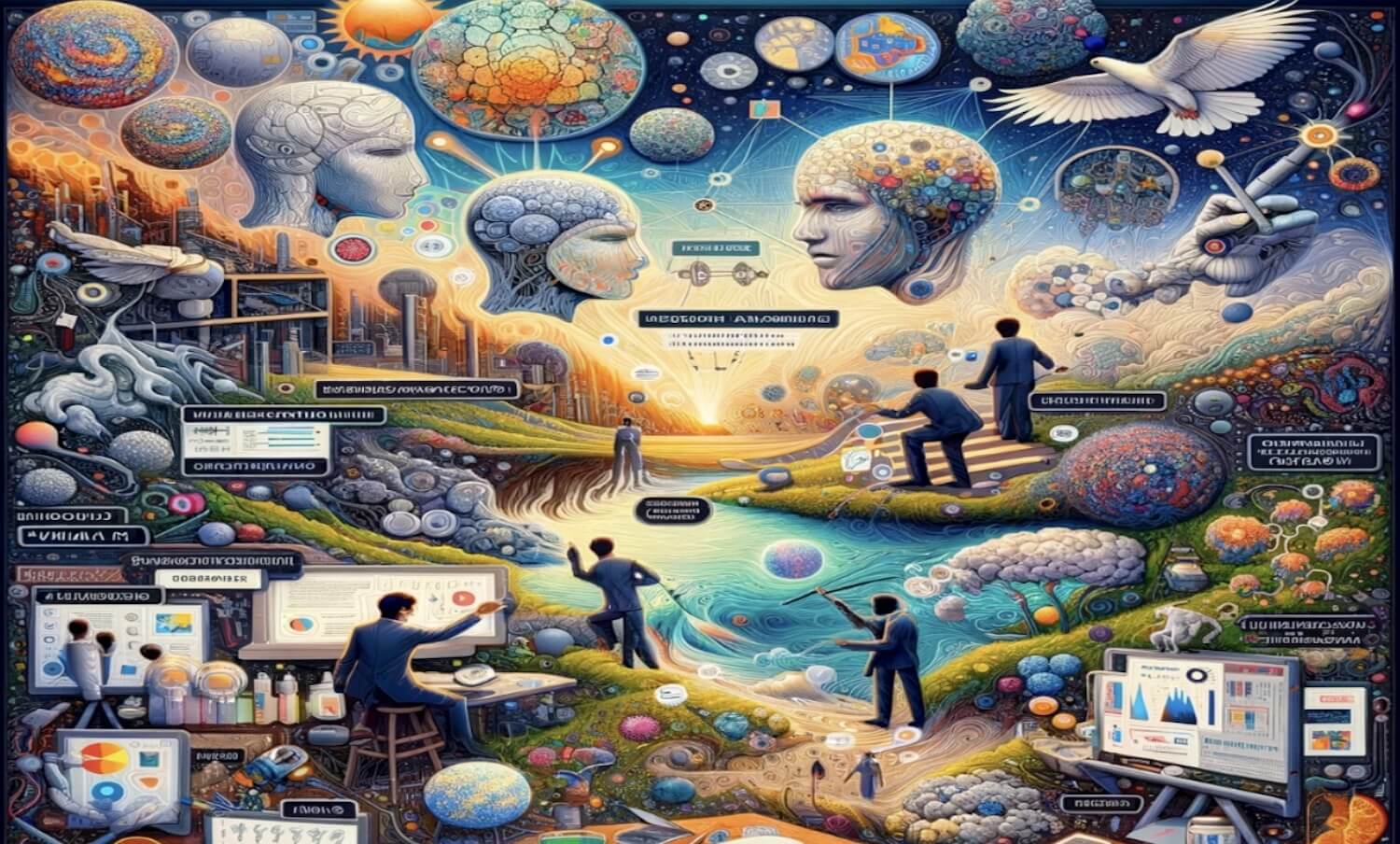Multimodal AI: Shaping personalised experiences and strengthening digital security
Are we entering a new era where artificial intelligence (AI) not only understands our preferences but also safeguards our digital identities? In this article, we will try to unravel how multimodal generative AI is spearheading the movement towards personalised and adaptive experiences while simultaneously strengthening security measures to protect against misuse.
We are witnessing an unprecedented surge in multimodal generative AI capabilities.
Massive, general-purpose tools such as Midjourney and ChatGPT have attracted the most attention among consumers exploring generative AI.
Multimodal AI leverages diverse data inputs – text, images and sound – to generate outputs that transcend traditional single-mode systems.
However, with great power comes great responsibility. As we harness AI to offer personalised and adaptive experiences, the burden is on us to ensure these systems are secure.
Open-Source model development is rapidly accelerating, and these models already outperform leading closed models on select tasks. Open-source AI models like Meta’s LLaMA2 70B, Mixtral 8x7B, Yi 34B or Falcon 180B offer tremendous opportunities for innovation but also pose potential risks if not managed correctly.
Personalised and adaptive experiences
The success of it lies in developing AI systems that adapt and personalise. This is not a static process! It involves continuous pre-training and fine-tuning to suit individual user needs. We’re moving towards a future where AI understands context and delivers bespoke content with precision.
AI models are now very skilled at learning from multimodal data, enabling them to understand complex user requests and provide tailored responses.
Unleashing new potentials
The potential of AI is immense. It has the power to not only understand the nuances of human language but also to generate and recommend content in a way that is personalised to each individual’s preferences. This is not a distant dream but a tangible reality with models like GPT-3, GPT-4 and not only, which offer nuanced and context-aware interactions.
Yet, unleashing this potential requires a careful balance. Ethical concerns cannot be an afterthought. We must proactively address the potential for misuse and the societal impacts of AI personalisation.
As the use of GenAI increases rapidly, regulations will need to keep up with the pace. Additionally, though still an emerging concept, AI ‘hallucinations’ or false outputs insurance policies, in combination with regulations, are aiming to protect against the unpredictable nature of AI-generated content.
In business-critical or client-interfacing environments, AI hallucinations pose a severe risk. Retrieval-Augmented Generation (RAG) presents a viable solution to mitigate such risks, significantly impacting enterprise AI integration.
RAG blends text generation with information retrieval to enhance the accuracy and relevance of AI-generated content. By allowing Large Language Models (LLMs) to pull from external databases, RAG facilitates responses that are contextually enriched and data-accurate. Bypassing the need to store all knowledge directly in the LLM also reduces model size, enhancing operational efficiency and reducing computational overheads.
Ethical concerns and misuse
We cannot ignore the elephant in the room: the ethical implications of AI. This includes safeguarding against misuse and ensuring AI doesn’t perpetuate bias or infringe on privacy. Ethical AI is not optional, it’s a fundamental component of the future of AI.
The following visualization is designed exclusively for educational purposes, aiming to facilitate learning and knowledge enhancement without any commercial intent or application.
| GPT-3 |
 ✅ Successfully jailbroken |
| GPT-4 |
 ❌ Request failed |
The concept of ChatGPT jailbreak prompts has emerged as a way to navigate around these restrictions and unlock the full potential of the AI model. Jailbreak prompts are specially crafted inputs that aim to bypass or override the default limitations imposed by OpenAI‘s guidelines and policies.
OpenAI and other organizations are constantly refining their models and policies to address the challenges and ethical considerations associated with jailbreaking.
Security impacts are equally crucial. Systems must be designed so are resilient against attacks and safeguard user data. Regulations play a key role here, providing a framework within which we can innovate safely.
Shadow AI
Shadow IT is a well-known phenomenon, but its counterpart, Shadow AI, may not be as recognised. With generative AI technologies readily accessible through any standard web browser, Shadow AI is becoming an increasingly prevalent trend.
The data, once it’s integrated into public models, is immutable!
To combat the rise of Shadow AI, organisations must proactively manage access, articulate and enforce policy adherence, and invest in educating and training their workforce. These measures are crucial steps for immediate implementation to mitigate the risks associated with unsanctioned AI utilization.
Conclusion
We have explored the delicate interplay between AI-powered personalisation and security. From the rise of multimodal generative AI to the intricate process of pre-training and fine-tuning, our journey has highlighted both the potential and the precautions necessary in this exciting frontier.
